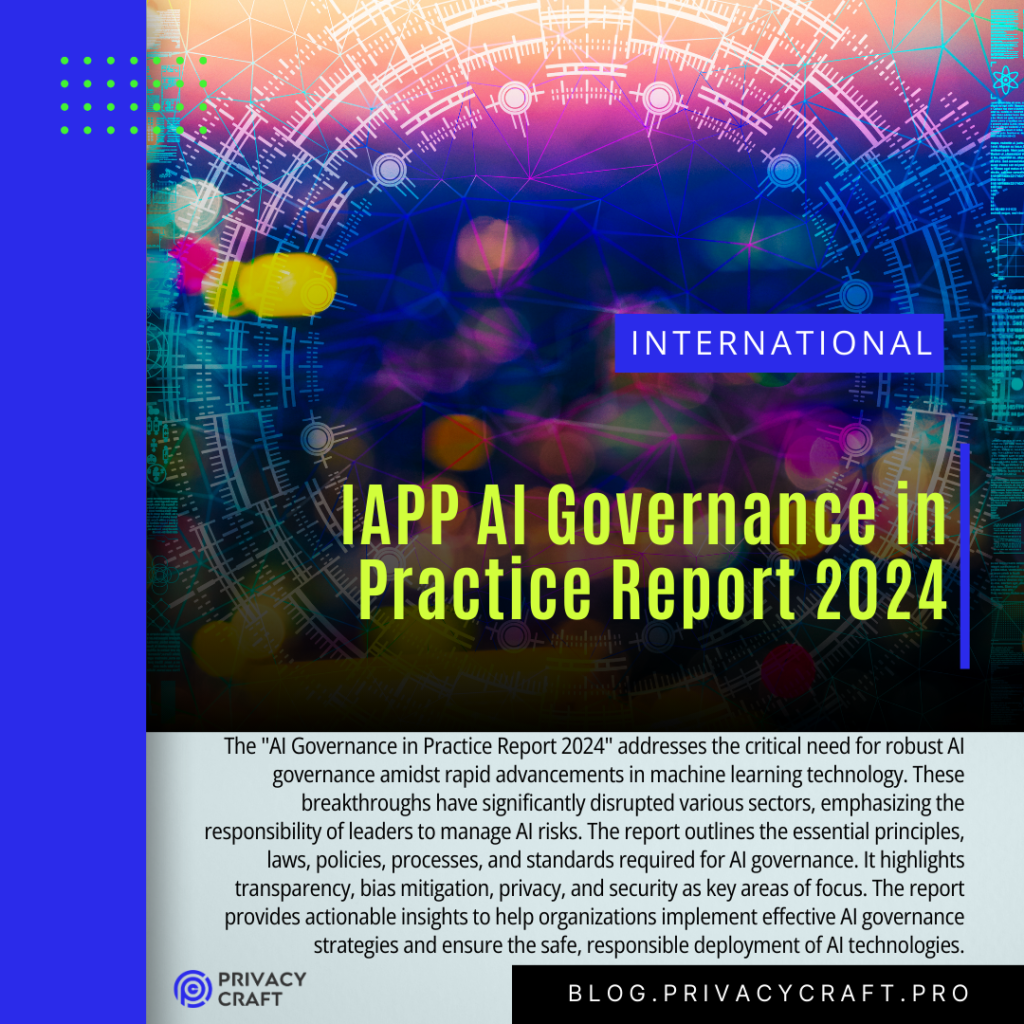The “Organizational Digital Governance Report 2024” by IAPP explores how businesses are addressing the challenges brought on by digital technologies and increasing regulatory complexity. Digital governance now encompasses privacy, AI, cybersecurity, and more, demanding a coordinated approach. The report is based on interviews with over 20 senior leaders from major tech-driven firms and highlights several key insights:
Key Drivers of Digital Governance
Organizations are facing regulatory demands from frameworks like GDPR, the AI Act, and Digital Markets Act, along with evolving laws worldwide. This “alphabet soup” of regulations requires companies to develop governance structures that ensure compliance while balancing operational needs. The political, social, and technological environment also contributes to the need for more comprehensive digital governance models.
Organizational Structures and Approaches
Many companies are in the early stages of formalizing digital governance, often referred to as “analog governance,” where different functions operate independently. More mature organizations are adopting “augmented” models with dedicated governance committees, such as AI governance boards and privacy committees, to streamline decision-making. These models often assign specific roles and responsibilities across C-suite executives, such as Chief Privacy Officers (CPOs) and Chief Information Security Officers (CISOs), to manage the intersecting demands of privacy, AI, and cybersecurity.
Emerging Trends
The report identifies the rise of cross-functional governance approaches, where AI, cybersecurity, and data governance are increasingly intertwined. Notably, many Chief Privacy Officers are also gaining responsibilities in AI governance, with 63% of organizations assigning privacy functions to manage AI compliance. In addition, 69% of surveyed organizations have tasked privacy professionals with data governance responsibilities.
Challenges Ahead
Interviewees expressed challenges such as resource constraints, lack of internal coherence, and difficulties in coordinating across functions. Most organizations acknowledge that more work is needed to build sustainable, efficient governance models. The report suggests that greater investment in tooling, senior-level engagement, and cross-functional training will be key to overcoming these hurdles.
Overall, the report calls for organizations to take a proactive, structured approach to digital governance, as digital technologies and their associated risks become more ingrained in everyday business operations.
You can find the report and 3 possible organisational charts here.

♻️ Share this if you found it useful.
💥 Follow me on Linkedin for updates and discussions on privacy, digital and AI education.
📍 Subscribe to my newsletter for weekly updates and insights – subscribers get an integrated view of the week and more information than on the blog.
